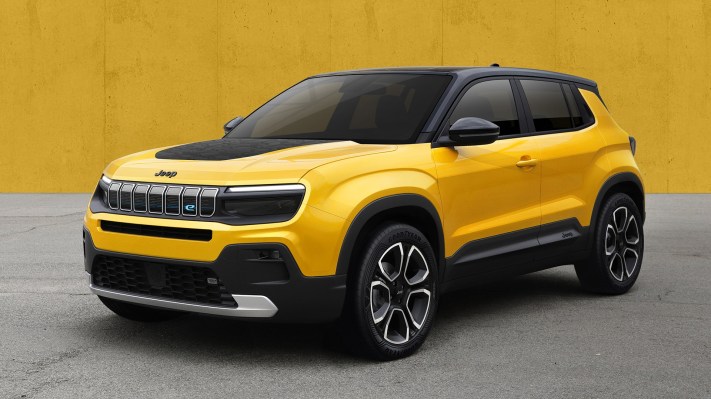Stellantis, the automaker that owns Fiat, Chrysler, Dodge, Ram, Jeep, Peugeot, Maserati and more, is rolling out a new plan that will help it become carbon net zero by 2038, with 50% reduction by 2030. At the same time, the automaker plans to double net revenues to $335 billion a year by 2030 and maintain double-digit profit margins as it ramps up efforts to electrify versions of its cars.
Stellantis, which was born out of a merger between Fiat Chrysler and Groupe PSA, also unveiled during a strategy meeting on Tuesday the first-ever fully electric Jeep SUV, which is expected to launch in early 2023, two years earlier than Stellantis had predicted last summer. The new Ram 1500 BEV pickup truck arriving in 2024 was also previewed on Tuesday.
Last year, Stellantis dedicated about $35.5 billion to electric vehicles and new software over the next four years as part of its push away from internal combustion engine vehicles. The automaker joins many of the other legacy brands, like Ford, General Motors and Volkswagen, in its move away from internal combustion engine vehicles. Like them, Stellantis will face the challenge of completely restructuring its operations while maintaining high profit margins.
In addition, the automaker is targeting a 25% to 30% dividend payout ration through 2025 and the repurchase of up to 5% of outstanding common shares.
During the strategy call, Stellantis said it aims to achieve 100% of sales in Europe and 50% of sales in the United States to be battery electric by the end of the decade, with a global annual sale of BEVs at 5 million. Through its 14 brands, Stellantis currently has 29 electrified models on sale globally. By 2030, the product lineup is expected to reach 75 BEVs globally, with a specific U.S. product offensive of more than 25 all-new BEVs. By following this plan, Stellantis expects new car revenues from premium and luxury vehicle segments to increase fourfold.
Another way Stellantis hopes to bring in revenue outside of sales, financing and repairs is through software that can sell products and subscriptions to passengers and drivers. In December, the automaker laid out an ambitious plan to generate $22.5 billion annually from software, a target that’s in line with competitors, by having 34 million connected cars on the road by 2030.
Aside from selling products and subscriptions, Stellantis has eyed ways to monetize connected vehicles via partnerships with BMW, Foxconn and Waymo, and at the strategy call, the automaker divulged more details of a plan to launch a “Delivery-as-a-Service” program with Waymo.
Stellantis is also pursuing a more vertically integrated manufacturing approach, which includes increasing its planned battery capacity by 140 gigawatt-hours to approximately 400 GWh, as well as expanding its hydrogen fuel cell technology to large vans in 2024 before further expanding into heavy-duty trucks.
To spur the adoption of advanced technologies, the automaker has opened the Stellantis Corporate Venture Fund with $334 million of initial funding.
